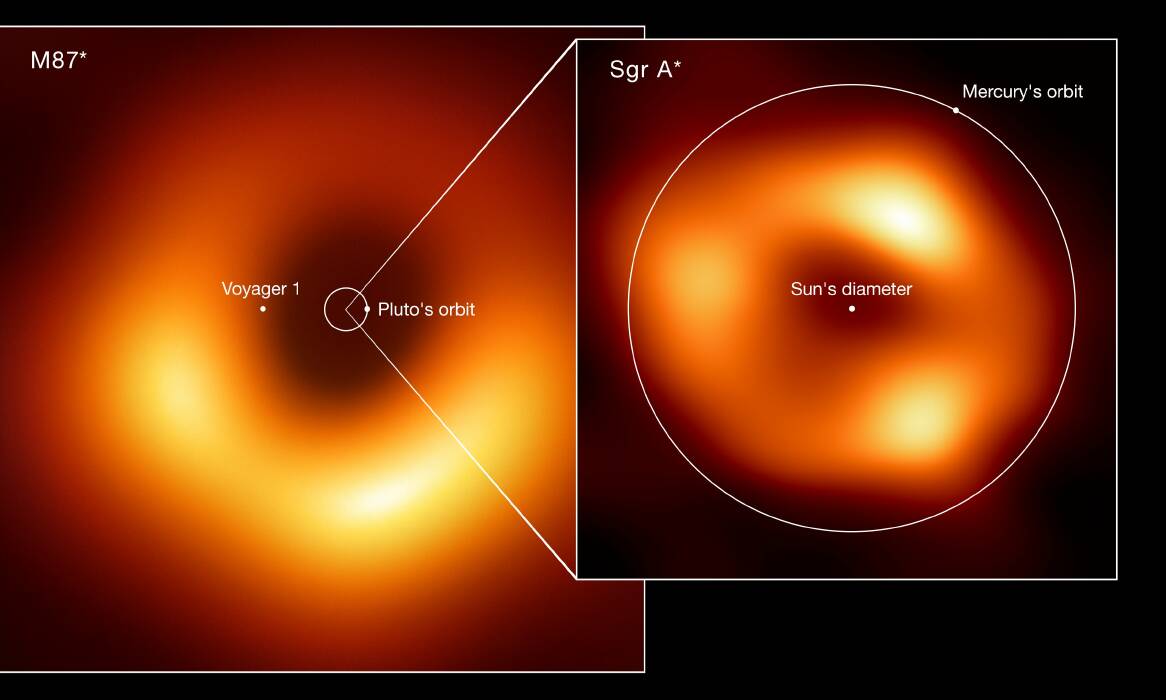
On Thursday night, the Event Horizon Telescope released the very first image of the supermassive black hole that lies at the centre of our Milky Way galaxy.
Called Sagittarius A*, it weighs about 4 million times the mass of the sun. Getting an image of this, once thought impossible, was an amazing technical achievement.
We have had measurements and data of the supermassive black hole for decades.
Using telescopes in Hawaii and Chile, scientists have monitored the orbits of stars near Sagittarius A*.
By carefully monitoring the movement of stars around Sagittarius A*, they could calculate their orbit, and therefore the amount of gravity needed for that orbit.
If you can calculate the gravity, you then also can figure out the mass. This same method was used to calculate the mass of the sun.
However, while these images showed what the supermassive black hole was doing, we could not see the black hole itself.
A black hole is an area in space where the gravity is so strong, nothing, not even light, can escape.
It is an area where a massive amount of matter has been squeezed together into a small area. And where you have mass, you have gravity.
They are not tears or "holes" in the universe - they are real objects. In fact, black holes are spheres, like a ball sitting in space just like earth or the sun.
When a big star, anywhere between 10 and 60 times the mass of our sun dies, part of the inside of the star collapses down. Imagine squeezing something the size of our sun, into a single point in space.
Stellar mass black holes are the baby black holes, the result of exploding (or rather collapsing) stars about 10 - 60 times the mass of our sun.
There could be upwards of 10 - 50 million of these black holes in our Milky Way galaxy alone.
Over time, these smaller black holes merge or collide to get bigger and bigger until we get the supermassive black holes.
One key part of the black hole, big or small, is called the event horizon.
This is the boundary of the black hole, the point where gravity is so strong that not even light can escape.
As such, everything past this point has no light, and therefore looks black, hence black hole.
But how do you image a black hole when there is no light? You are not looking at the black hole directly, but they cast a shadow or silhouette that one can see.
You can image all of the gas and stars swirling around the black hole - behind, on the side, and even in front.
However, anything behind will be blocked by the black hole.
Black holes get the wrap for being giant space vacuum cleaners - sucking anything and everything. However, you have to be close to the black hole to get sucked in. At nearly 26,000 light years away, the earth is safe.
We can enjoy the beauty of the black hole beast from a safe distance.
- Brad Tucker is an astrophysicist and cosmologist at Mount Stromlo Observatory, and the National Centre for the Public Awareness of Science at ANU







